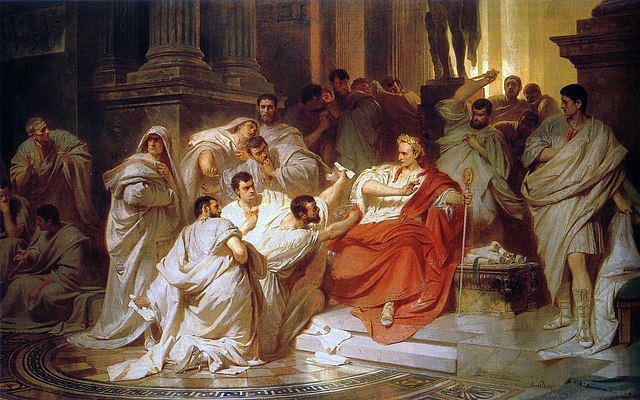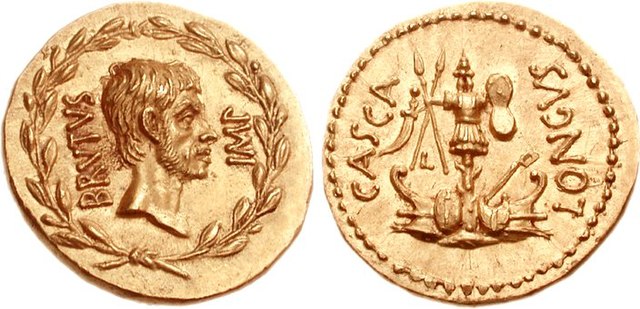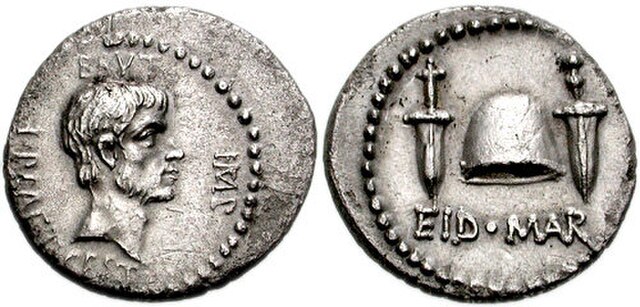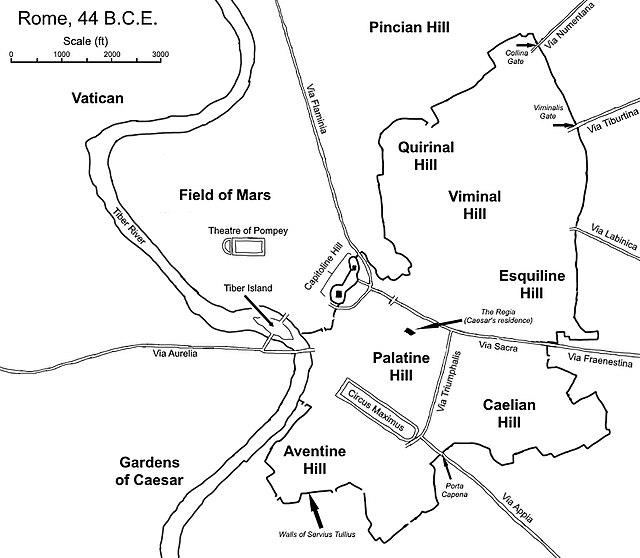Publius Servilius Casca Longus was one of the assassins of Julius Caesar. He and several other senators conspired to kill him, a plan which they carried out on 15 March 44 BC. Afterward, Casca fought with the liberators during the Liberators' civil war. He is believed to have died at the Battle of Phillipi either by suicide or by Octavian's forces.
Cimber (centre) holds out the petition and pulls at Caesar's tunic, while Casca behind prepares to strike: painting by Karl von Piloty.
A coin celebrating Casca and Brutus
Assassination of Julius Caesar
Julius Caesar was assassinated by a group of senators on the Ides of March of 44 BC during a meeting of the Senate at the Curia of Pompey of the Theatre of Pompey in Rome where the senators stabbed Caesar 23 times. They claimed to be acting over fears that Caesar's unprecedented concentration of power during his dictatorship was undermining the Roman Republic. At least 60 to 70 senators were party to the conspiracy, led by Marcus Junius Brutus, Gaius Cassius Longinus, and Decimus Junius Brutus Albinus. Despite the death of Caesar, the conspirators were unable to restore the institutions of the Republic. The ramifications of the assassination led to his martyrdom, the Liberators' civil war and ultimately to the Principate period of the Roman Empire.
The Death of Julius Caesar by Vincenzo Camuccini, c. 1805
The Ides of March coin, a Denarius portraying Brutus (obverse), minted in 43–42 BC. The reverse shows a pileus between two daggers, with the legend EID MAR (Eidibus Martiis – on the Ides of March), commemorating the assassination.
Possible bust of Julius Caesar, posthumous portrait in marble, 44–30 BC, Museo Pio-Clementino, Vatican Museums
The city of Rome, 44 BC






